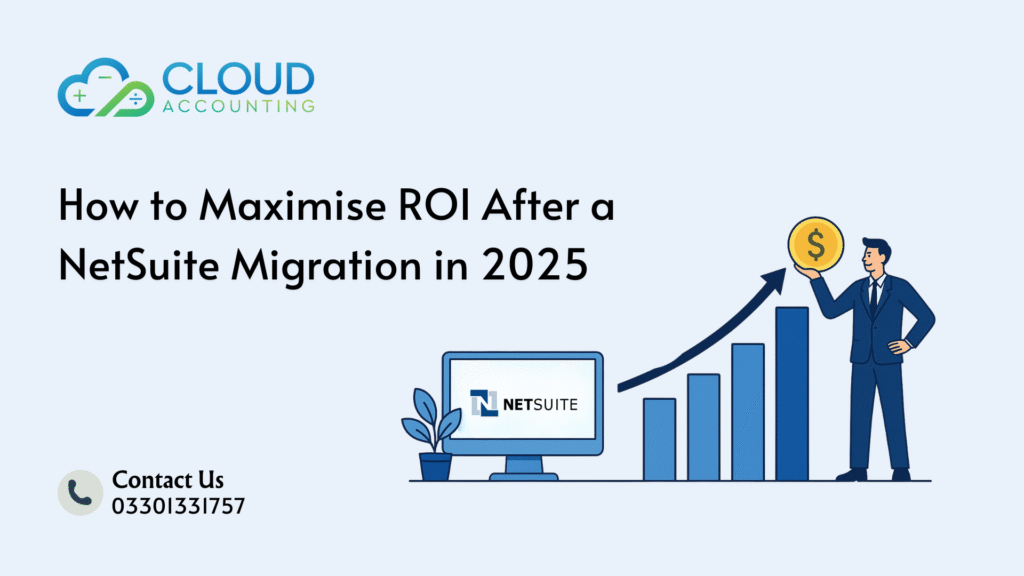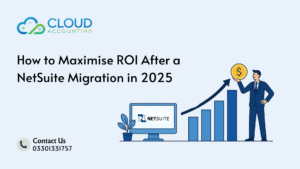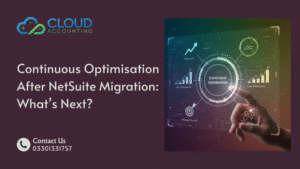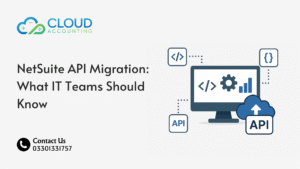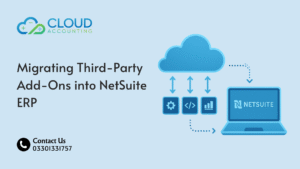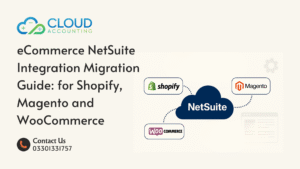When you finish a NetSuite migration, it’s easy to think the job is done. The data is in. The dashboards are loading. Your team is using the system. But here’s the truth many companies only discover months later: the real value doesn’t come from the migration itself — it comes from what you do after go-live. That’s why focusing on your NetSuite Post-Migration ROI is the smartest move you can make.
Businesses often underestimate how much value they leave on the table after switching to NetSuite. They settle for “good enough” instead of pushing the platform to deliver real gains in profit, time savings, and operational clarity. This blog shows you how to change that.
If you want to maximise returns, reduce hidden costs, and get full control of your financial systems, this guide gives you the practical roadmap you need.
Why ROI Drops If You Stop After Go-Live
Many businesses hit a slowdown right after migration. They expect instant improvements, but real benefits appear only when you optimise NetSuite around your team, workflows, and growth plans.
When companies fail to monitor their NetSuite Post-Migration ROI, they face issues like:
- Staff working with incomplete or incorrect workflows
- Reports showing inconsistent or outdated numbers
- Cluttered dashboards that confuse instead of guide
- Manual work continuing because automations weren’t finalised
- Integrations running, but not running efficiently
These problems don’t mean the migration failed. They mean the optimisation phase never happened.
If you want a clear return, you need to treat NetSuite as a system that evolves — not a one-time setup.
Start With a Post-Migration Audit
You can’t improve what you can’t see. That’s why a proper audit is the first step in boosting your NetSuite Post-Migration ROI.
A good audit helps you identify what’s working, what’s missing, and what needs tightening. Most businesses assume their system is running perfectly. A deeper look almost always reveals gaps.
Here’s what your audit should include:
1. Data Quality Review
Migration may bring across errors you don’t notice immediately.
Check for:
- Duplicate records
- Incorrect opening balances
- Account mapping mistakes
- Old tax codes
- Outdated vendor or customer details
These tiny mistakes can ripple into financial reporting errors.
2. Settings and Configuration Check
Many defaults are left untouched during migration because teams focus on getting the system live, not fully optimised.
Audit:
- Accounting preferences
- Tax settings
- User permissions
- Role restrictions
- Currency rules
- Posting periods
If these aren’t set correctly, accuracy and compliance suffer.
3. Report and Dashboard Review
Reports often migrate — but logic doesn’t always match your new workflow.
You should check:
- KPI relevance
- Dashboard load times
- Saved search accuracy
- Data refresh frequency
If reports aren’t reliable, decisions won’t be reliable either.
4. Integration Stability Check
Ecommerce, CRM, inventory, and billing tools must connect smoothly.
Test:
- Sync frequency
- Error alerts
- API call volume
- Mapping accuracy
A single bad field mapping can corrupt thousands of records.
Once you finish the audit, you have a baseline. Now you can start improving.
Optimise Your Workflows to Increase ROI
Workflow optimization is where most businesses see fast wins. When companies focus on improving workflow efficiency, NetSuite Post-Migration ROI improves faster than almost any other action.
Here are major areas to optimise:
1. Automate Manual Steps
NetSuite gives you endless automation options — approvals, billing, purchase orders, fulfilment, reminders, alerts, and more.
Areas to automate first:
- Recurring invoices
- Expense allocations
- Customer reminders
- Vendor approvals
- Inventory level notices
- Contract renewals
Each manual step replaced by automation saves time and reduces errors.
2. Simplify Approval Chains
NetSuite’s native approvals are powerful, but they can get complicated.
Ask:
- Do we need all these steps?
- Who actually needs to approve this?
- Is the delay creating bottlenecks?
Lean approval paths improve cash cycles and operational speed.
3. Improve Data Entry Rules
You can enforce accuracy by using:
- Mandatory fields
- Character limits
- Field validations
- Pre-filled templates
- Drop-down standardisation
Better inputs equal better reporting — and better ROI.
Upgrade Dashboards to Drive Better Decisions
If your dashboards feel cluttered, outdated, or confusing, your team won’t use them. A sharp dashboard helps leaders make smarter calls.
Here’s how to refresh them to support your NetSuite Post-Migration ROI.
1. Remove Noise
Keep only essential metrics:
- Cash flow position
- Accounts receivable
- Accounts payable
- Gross profit margins
- Inventory turnover
If it’s not actionable, it doesn’t belong on the dashboard.
2. Group KPIs by Role
Finance teams need different dashboards than sales or warehouse staff.
Group by:
- CEO
- CFO
- Accounting
- Supply chain
- Sales
- Project management
This cuts analysis time and improves clarity.
3. Use Saved Searches for Better Insights
Saved searches can help you monitor:
- Unbilled orders
- Overdue AR
- PO bottlenecks
- Inventory shortages
When used well, they instantly improve reporting accuracy.
Strengthen Integrations for Higher Efficiency
Weak integrations silently lower your NetSuite Post-Migration ROI. The more systems you connect, the more chances there are for errors, delays, and mismatches.
Optimise your connections by checking:
1. Data Structures
Does each platform use the same fields?
If not, fix the mapping.
2. Sync Frequency
Slow syncing leads to slow decisions.
3. Error Handling
Set automatic error alerts so issues don’t sit unnoticed.
4. Redundant Data Paths
Avoid double syncing the same record. It creates duplicates.
When integrations run cleanly, your team gains hours back each week.
Boost Team Productivity With Better Training
Even the best NetSuite setup fails if the team doesn’t use it well.
Good training can improve your NetSuite Post-Migration ROI more than any technical configuration.
Most staff learn the basics but never get advanced training. That’s where ROI disappears.
Key training areas include:
- Advanced reporting
- Saved searches
- Transaction matching
- Vendor credit flows
- Inventory tracking
- Order fulfilment
- Month-end tasks
When each team member knows how their part connects to the overall system, everything runs smoother.
Rebuild Reports to Match Business Goals
Reports from your previous software were built for a different system. NetSuite requires fresh logic.
To maximise your NetSuite Post-Migration ROI, rebuild reports that align with:
- Profit goals
- Business model
- Compliance needs
- Inventory accuracy
- Multi-location structures
- Revenue cycles
Don’t copy your old system’s reports. Improve them.
Tighten Financial Controls for Better Accuracy
A well-configured control framework reduces risks that eat into ROI.
Strengthen:
- User permissions
- Role-based approvals
- Closed period controls
- Audit trail visibility
- Reconciliation rules
- Vendor creation restrictions
Clear controls reduce fraud, errors, and mispostings — all of which increase cost if left unchecked.
Fine-Tune Inventory Management
If your company handles stock, inventory is one of the biggest ROI drivers.
To increase your NetSuite Post-Migration ROI, review:
- Reorder points
- Safety stock settings
- Demand forecasting
- Landed cost calculations
- Warehouse location tracking
When inventory is clean, your cost of goods sold becomes more predictable.
Revisit Your Chart of Accounts
A messy chart of accounts creates reporting chaos. After migration, it’s normal to find duplicates, unnecessary accounts, and outdated categories.
Clean up:
- Redundant accounts
- Unused tax groups
- Old departments
- Legacy classes
A logical COA improves reporting clarity, which improves ROI.
Monitor Month-End Close Performance
Your month-end close reveals how efficient your system really is.
Higher NetSuite Post-Migration ROI depends on:
- Faster reconciliations
- Accurate balances
- Clean journals
- Smooth accrual processes
- Stable bank feeds
If your month-end is slow, your operational efficiency drops immediately
Enhance Automation to Cut Operating Costs
As your business grows, the same processes shouldn’t take more time. NetSuite’s automation tools help you scale without increasing headcount.
Improve automation by:
- Using scheduled scripts
- Setting automated reminders
- Creating workflow alerts
- Establishing recurring entries
- Automating approvals
- Building rule-based postings
Every hour saved is direct ROI.
Use Advanced Modules That Actually Add Value
Many businesses underuse add-ons that could deliver huge returns.
Modules that often improve NetSuite Post-Migration ROI include:
- Advanced Financials
- Demand Planning
- Fixed Assets
- Multi-Book Accounting
- Warehouse Management
- Revenue Recognition
Not every module is right for every business — but the right one can unlock major gains.
Strengthen Security to Reduce Financial Risk
A secure system saves money long-term. One breach or data leak can destroy ROI instantly.
Review:
- Two-factor authentication
- Password rules
- Access logs
- File cabinet permissions
- Integration access tokens
Security is part of your ROI because it protects the system you invested in.
Set Up Continuous Monitoring for Long-Term Gains
The businesses with the highest NetSuite Post-Migration ROI do one thing others don’t: they monitor the system continuously.
Make it a habit to track:
- Dashboard usage
- Report accuracy
- Automation performance
- Month-end duration
- System errors
- Integration failures
A simple monthly check-in can prevent expensive problems.
Plan for Quarterly Optimisation Reviews
Your company evolves every quarter — NetSuite should evolve with it.
Quarterly reviews help you:
- Align workflows with new goals
- Update reports based on new KPIs
- Improve inventory accuracy
- Refresh approval rules
- Remove unused fields or modules
Treat NetSuite as a living system, not a one-time project.
Final Thoughts: ROI Doesn’t Happen by Accident
If you want your NetSuite investment to pay you back many times over, you need a clear plan for optimisation. Successful businesses don’t wait for improvement — they build it.
Focus on:
- Clean data
- Smart automation
- Strong reporting
- Better training
- Tight controls
- Regular reviews
When done right, your NetSuite Post-Migration ROI becomes a long-term advantage, not a one-time metric.
If you want a deeper audit, optimisation, or ongoing support, I can prepare your next steps.

